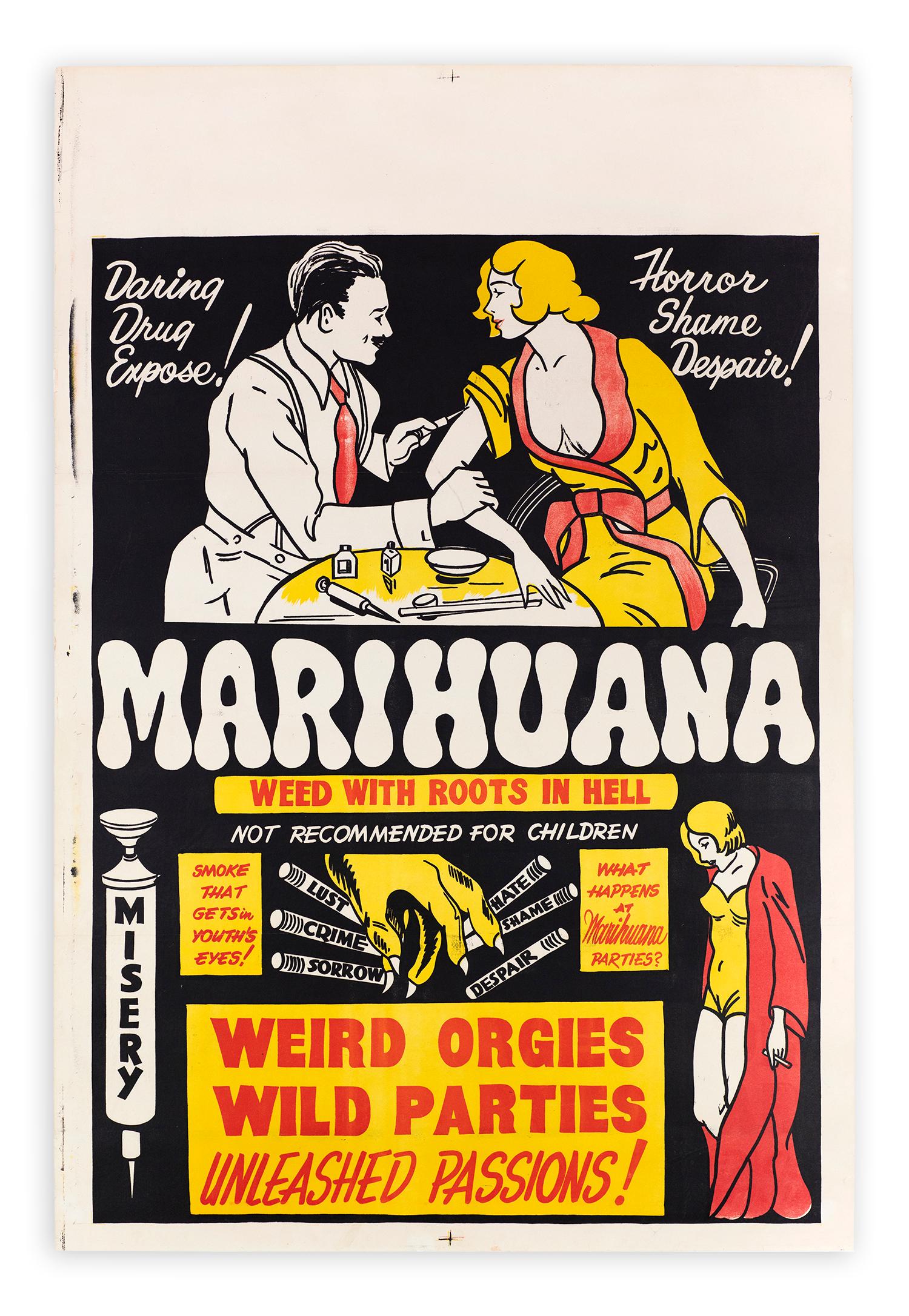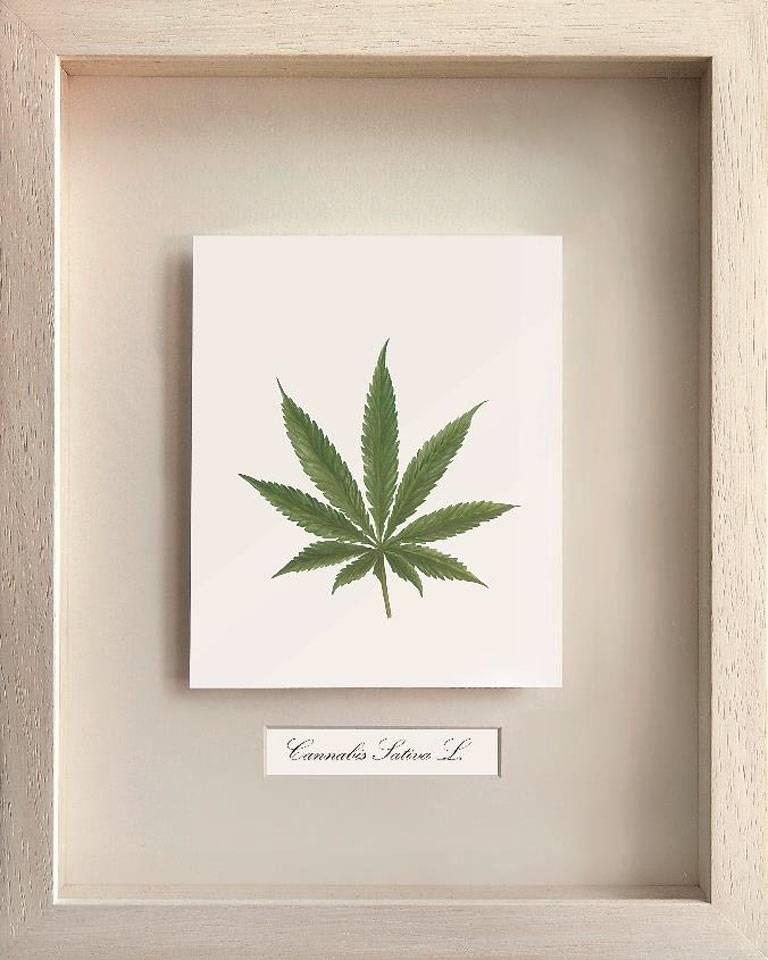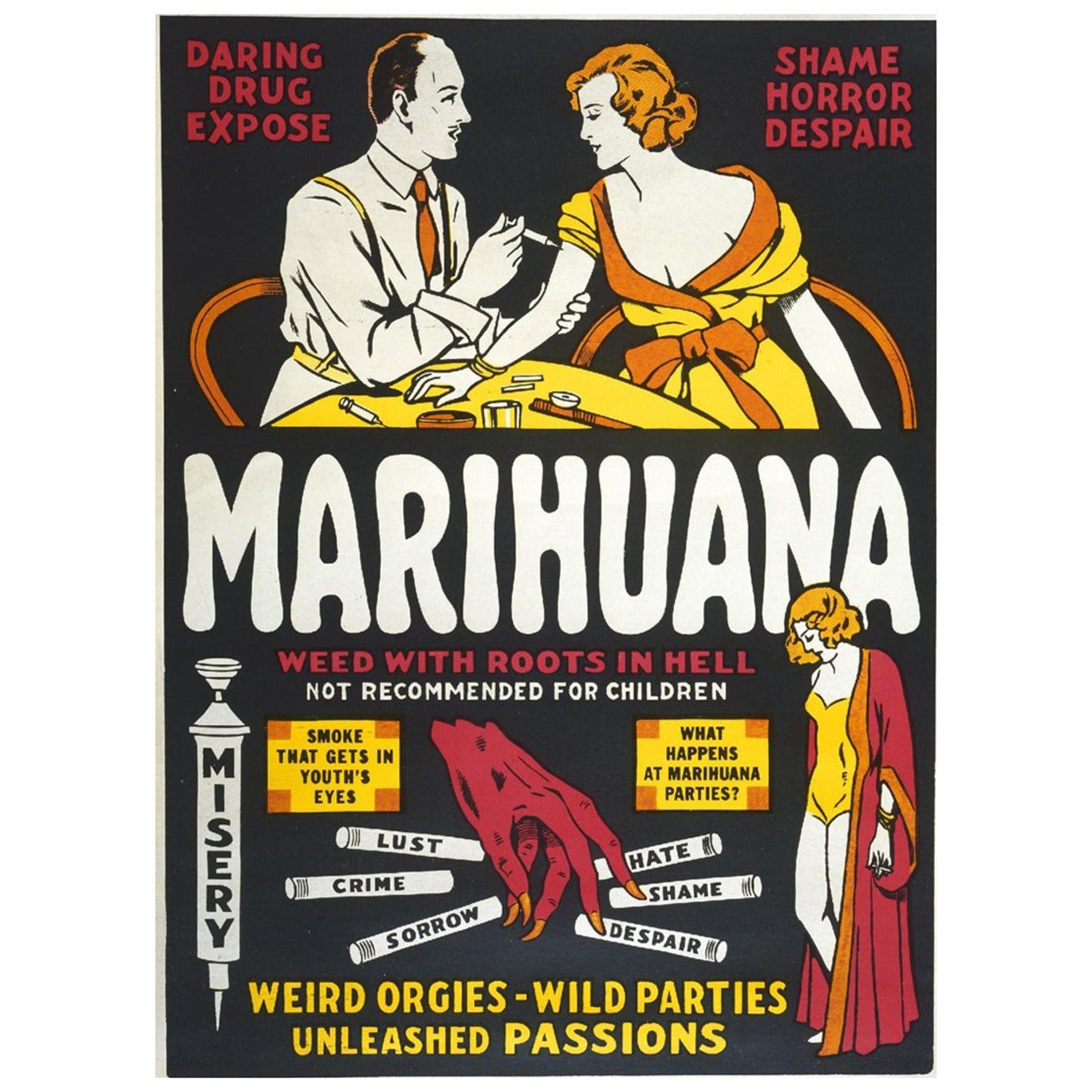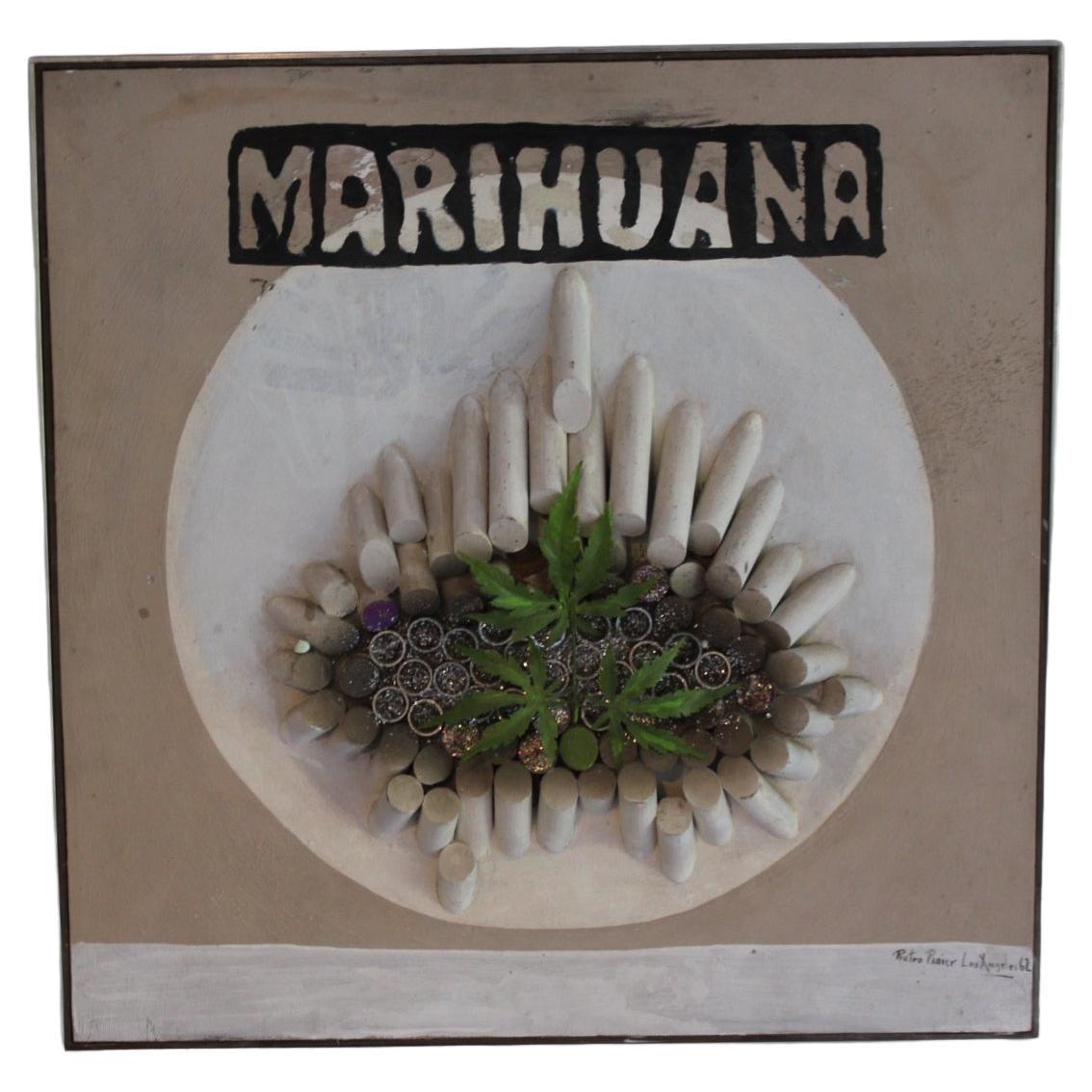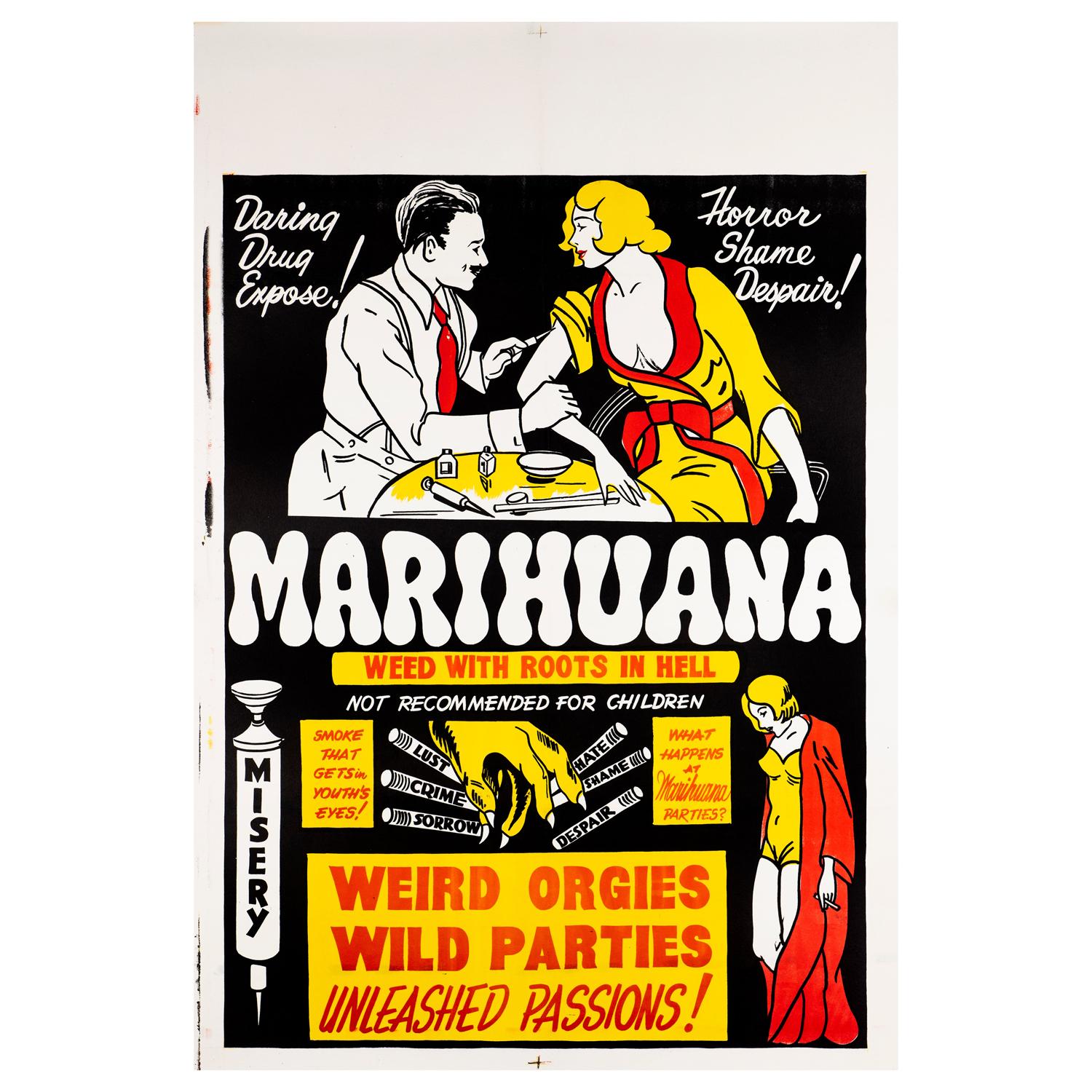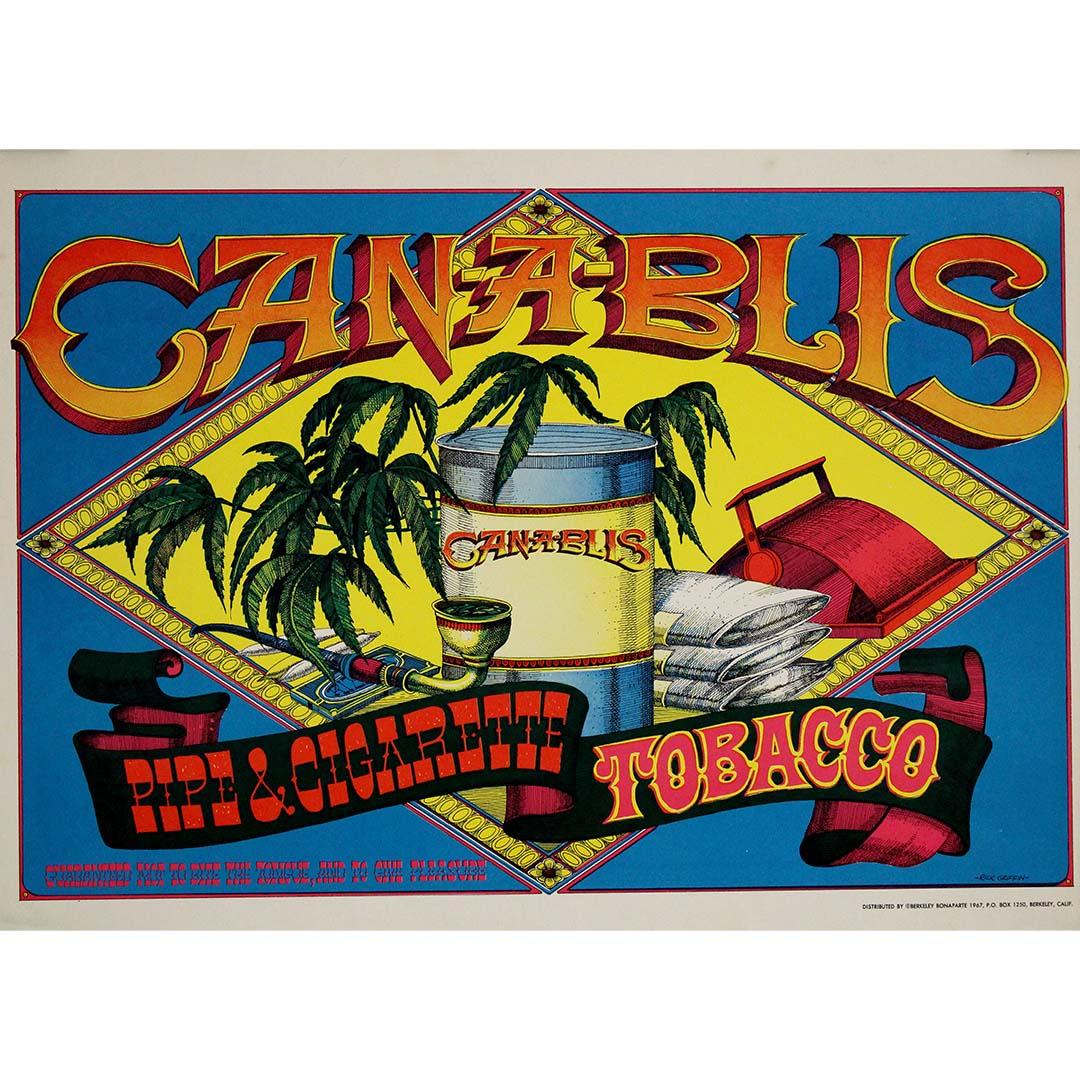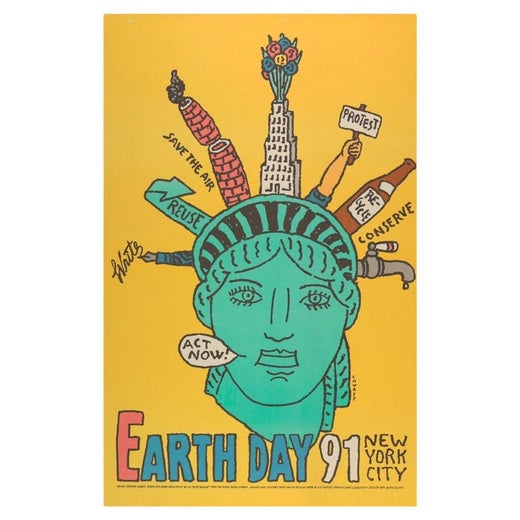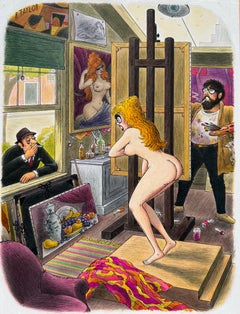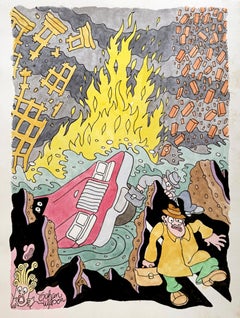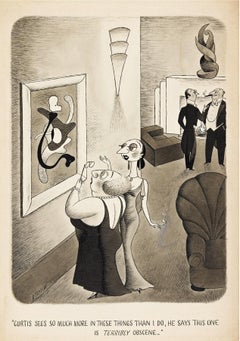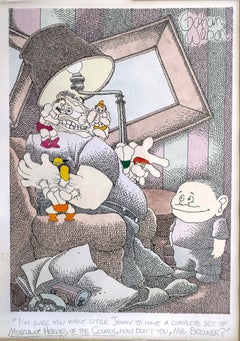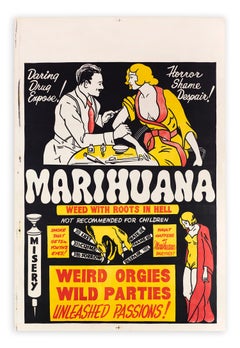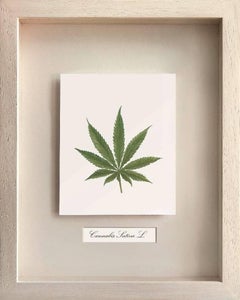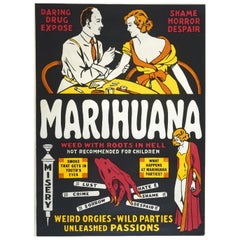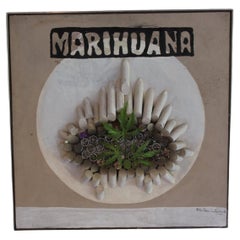Items Similar to Reefer Madness, Marajuana - Pot - Cannabis - Cover Atlantic Monthly Magazine
Want more images or videos?
Request additional images or videos from the seller
1 of 5
Seymour ChwastReefer Madness, Marajuana - Pot - Cannabis - Cover Atlantic Monthly Magazine1994
1994
$4,200
£3,160.41
€3,653.67
CA$5,930.52
A$6,430.42
CHF 3,412.55
MX$79,198.81
NOK 42,296.39
SEK 39,918.07
DKK 27,271.92
About the Item
Gouache, Crayon, Pencil, Film on Paper, not framed
Cover Atlantic Monthly Magazine August 1994
- Creator:Seymour Chwast (1931, American)
- Creation Year:1994
- Dimensions:Height: 8.5 in (21.59 cm)Width: 11 in (27.94 cm)
- Medium:
- Movement & Style:
- Period:
- Condition:
- Gallery Location:Miami, FL
- Reference Number:1stDibs: LU38531273803
Seymour Chwast
Seymour Chwast's posters are in the permanent collections of many museums worldwide. Seymour Chwast"s art helped to propel a revolution in American illustration during the early 1960"s from sentimental realism to comic expressionism. His work for magazines, posters, advertisements, and children"s books influenced at least two generations of illustrators and designers in America and abroad to explore a broad range of stylistic and conceptual methods, as well as to wed illustration with design. In addition to his unique style and innovative techniques, Chwast contributed a delightfully absurdist sense of wit and humor to twentieth century applied art. Although rooted in the decorative traditions of the nascent years of commercial art—notably Victorian, Art Nouveau, and Art Deco—his work is not a synthesis of the past and present, but an invention of the most original kind.

About the Seller
5.0
Gold Seller
Premium sellers maintaining a 4.3+ rating and 24-hour response times
Established in 2005
1stDibs seller since 2016
117 sales on 1stDibs
Typical response time: 1 hour
- ShippingRetrieving quote...Shipping from: Miami, FL
- Return Policy
Authenticity Guarantee
In the unlikely event there’s an issue with an item’s authenticity, contact us within 1 year for a full refund. DetailsMoney-Back Guarantee
If your item is not as described, is damaged in transit, or does not arrive, contact us within 7 days for a full refund. Details24-Hour Cancellation
You have a 24-hour grace period in which to reconsider your purchase, with no questions asked.Vetted Professional Sellers
Our world-class sellers must adhere to strict standards for service and quality, maintaining the integrity of our listings.Price-Match Guarantee
If you find that a seller listed the same item for a lower price elsewhere, we’ll match it.Trusted Global Delivery
Our best-in-class carrier network provides specialized shipping options worldwide, including custom delivery.More From This Seller
View AllThe Male Gaze: Literally. Playboy Cartoon
By Richard Taylor
Located in Miami, FL
We often hear about the "Female Gaze." It's how women view art and society from the female perspective. However, we rarely hear about the " Male Gaze" .
In this 1969 Playboy cartoon,...
Category
1960s American Realist Nude Drawings and Watercolors
Materials
Watercolor, Ink, Gouache, Illustration Board, Pencil
"Still, You Gotta Admit Crime is Down" - New Yorker Cartoon
Located in Miami, FL
Gahan Wilson was a Conceptual Artist who was also a Cartoonist.
The present work was considered as a cover for the New Yorker Magazine for the Jan, 9, 1998 issue. It made it up to th...
Category
1990s Surrealist Landscape Drawings and Watercolors
Materials
Paper, Ink, Mixed Media, Watercolor
Art Lovers and Art Critics Analyzing Obscene Painting. Cartoon
By Richard Taylor
Located in Miami, FL
Cartoonist Richard Taylor was trained in academic art. He frequently comments on abstract art which was the new and radical thing at the time. "Curtis sees so much more in these thi...
Category
1940s Academic Portrait Drawings and Watercolors
Materials
Ink, Board
Macabre Cartoon Children's Toys Attack Father - Playboy Cartoon
Located in Miami, FL
A child looks on with glee as his "Muscular Heroes of the Cosmos" Toys transform from inanimate objects to real, actionable beings and beat up his father. Signed upper right, Gahan...
Category
1980s Outsider Art Figurative Drawings and Watercolors
Materials
Paper, Ink, Watercolor
Apocalypse, Catastrophic Destruction of the World, Surrealism - Life Magazine
Located in Miami, FL
Apocalypse in 1962? At the height of the Cold War, Life Magazine commissions an illustration that describes the world's end by means other than a nuclear war with Russia. Richard Erdoes brilliantly illustrates the work with his highly stylized painting technique. My favorite part of the work is on the left side showing a group of people packed together as they fall into oblivion. A clear reference would be Hieronymus Bosch's "The Last Judgment "
Once Again the World Ends." Illustration published in Life Magazine, Feb. 9, 1962
Signed in lower right image.
Unframed
Richard Erdoes (Hungarian Erdős, German Erdös; July 7, 1912 – July 16, 2008) was an American artist, photographer, illustrator and author.
Early life
Erdoes was born in Frankfurt,[1] to Maria Josefa Schrom on July 7, 1912. His father, Richárd Erdős Sr., was a Jewish Hungarian opera singer who had died a few weeks earlier in Budapest on June 9, 1912.[2] After his birth, his mother lived with her sister, the Viennese actress Leopoldine ("Poldi") Sangora,[3] He described himself as "equal parts Austrian, Hungarian and German, as well as equal parts Catholic, Protestant and Jew..."[4]
Career
He was a student at the Berlin Academy of Art in 1933, when Adolf Hitler came to power. He was involved in a small underground paper where he published anti-Hitler political cartoons which attracted the attention of the Nazi regime. He fled Germany with a price on his head. Back in Vienna, he continued his training at the Kunstgewerbeschule, now the University of Applied Arts, Vienna.[5] He also wrote and illustrated children's books and worked as a caricaturist for Tag and Stunde, anti-Nazi newspapers. After the Anschluss of Austria in 1938 he fled again, first to Paris, where he studied at the Academie de la Grande Chaumiere, and then London, England before journeying to the United States. He married his first wife, fellow artist Elsie Schulhof (d. xxxx) in London, shortly before their arrival in New York City.
In New York City, Erdoes enjoyed a long career as a commercial artist, and was known for his highly detailed, whimsical drawings. He created illustrations for such magazines as Stage, Fortune, Pageant, Gourmet, Harper's Bazaar, Sports Illustrated, The New York Times, Time, National Geographic and Life Magazine, where he met his second wife, Jean Sternbergh (d. 1995) who was an art director there. The couple married in 1951 and had three children.[6] Erdoes also illustrated many children's books.
An assignment for Life in 1967 took Erdoes to the Pine Ridge Indian Reservation for the first time, and marked the beginning of the work for which he would be best known. Erdoes was fascinated by Native American culture, outraged at the conditions on the reservation and deeply moved by the Civil Rights Movement that was raging at the time. He wrote histories, collections of Native American stories...
Category
1960s Surrealist Figurative Drawings and Watercolors
Materials
Mixed Media, Gouache, Board, Illustration Board
Sexual Issues, Cosmopolitan Magazine Illustration
Located in Miami, FL
Brilliant 1970s illustrator Roger Hane paints a surreal scene depicting a beautiful girl with flowing black hair, a strong jawline, and a blue cast to her f...
Category
1970s Figurative Paintings
Materials
Canvas, Acrylic
You May Also Like
Marihuana, Exploitation marijuana/cannabis culture Dwain Esper film poster, 1936
Located in Chicago, IL
Even in its earlier years, the movie industry was based around spectacle. Exploitation posters, especially those depicting drug culture, were often design...
Category
1930s Modern Prints and Multiples
Materials
Lithograph
Medical Plants, Canabis Sativa L. (MARIJUANA)
By Peggy Kliafa
Located in New York, NY
MEDICINAL PLANTS, CANABIS SATIVA L. (MARIJUANA), 2013
Tempera on paper
49,5 x 38,5 cm
Born in 1967 in Trikala, she grew up in Athens, Greece, where she lives and works. She graduate...
Category
2010s Contemporary Still-life Paintings
Materials
Tempera, Archival Paper
1936 Marihuana Original Vintage Poster
Located in Winchester, GB
This stunning poster was created in 1936 to promote Dwain Esper's exploitation film "Marihuana - The Weed With Roots in Hell". The film, which has gone on to become a cult classic, c...
Category
Vintage 1930s American Posters
Materials
Linen, Paper
1960s Pop Art mixed media painting by Pietro Psaier
Located in Seaford, GB
1960s Pop Art Mixed Media Painting by Pietro Psaier – "Home-Grown Big Joints"
Original Mixed Media Artwork from the Hollywood & Vine Head Shop Series (19...
Category
Vintage 1960s American Mid-Century Modern Paintings
Materials
Acrylic
'Marihuana' Original Vintage US One Sheet Movie Poster, 1930s
Located in Devon, GB
Claiming to be a "Daring Drug Expose!", this early exploitation film evaded strict censorship of its lurid content ("Weird Orgies, Wild Parties, Unleashed Passions!") by claiming to ...
Category
Vintage 1930s American Art Deco Posters
Materials
Paper
Original 1967 poster by Rick Griffin for Can-A-Blis Pipe & Cigarette tobacco
Located in PARIS, FR
A vibrant explosion of color, lettering, and 1960s subculture energy, this original 1967 poster by Rick Griffin is a brilliant example of the artist’s unmistakable psychedelic style....
Category
1960s Prints and Multiples
Materials
Paper, Lithograph
